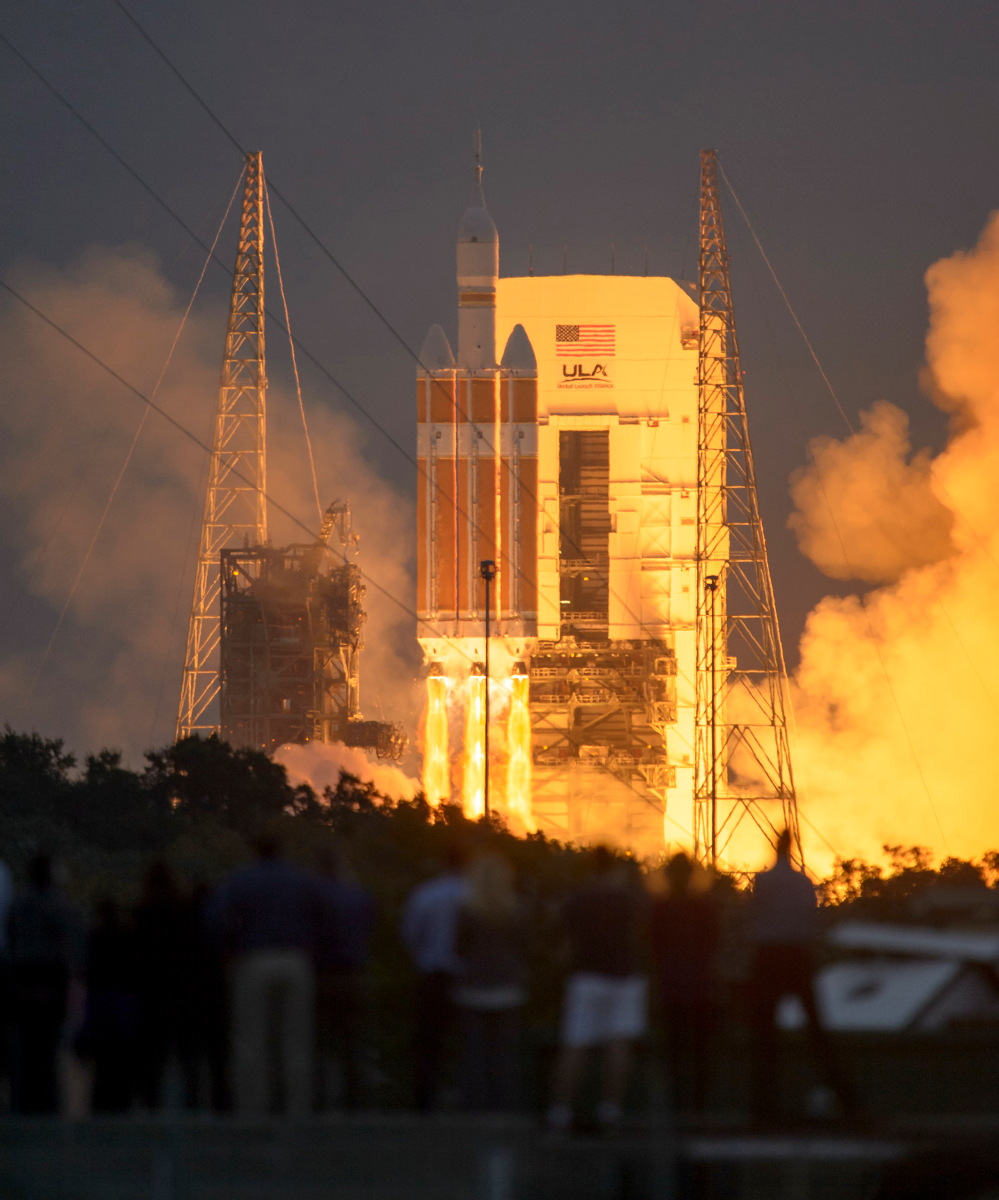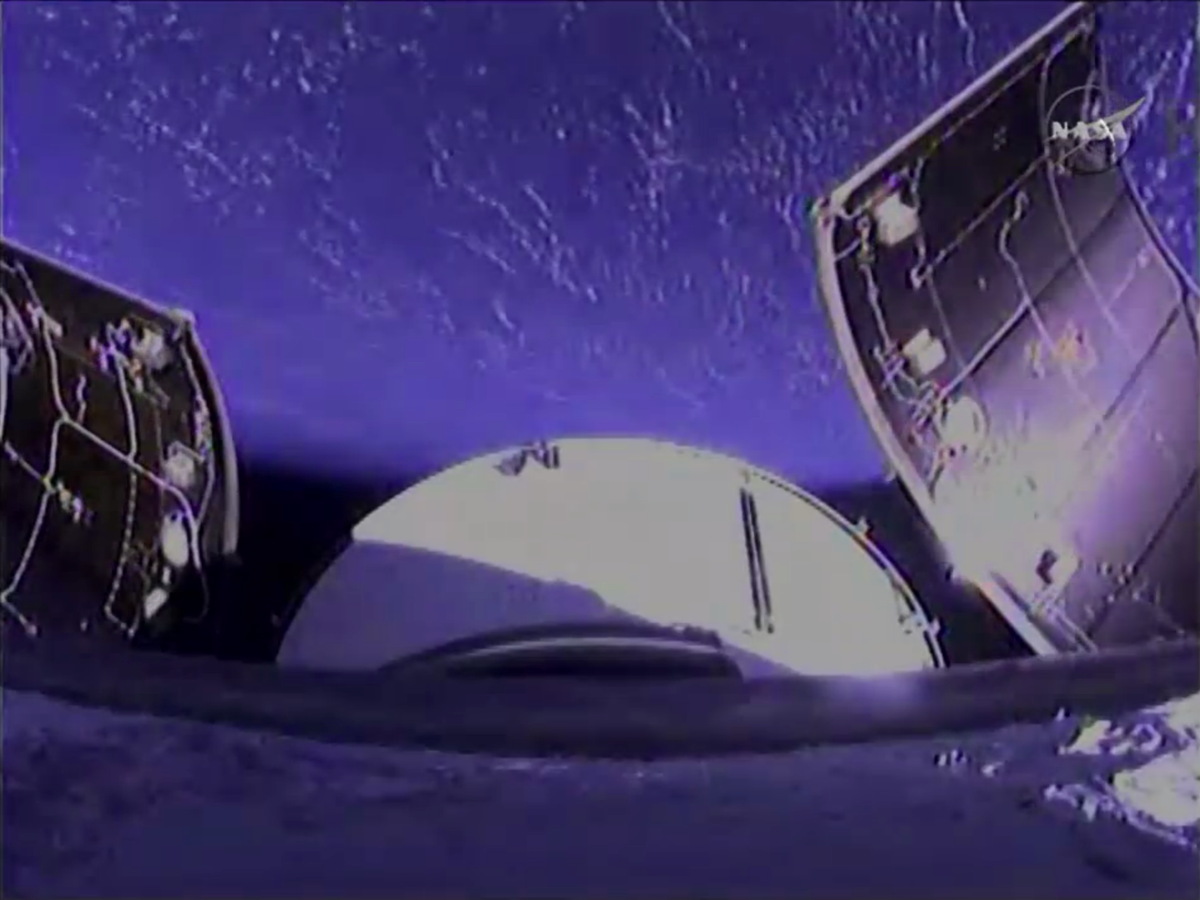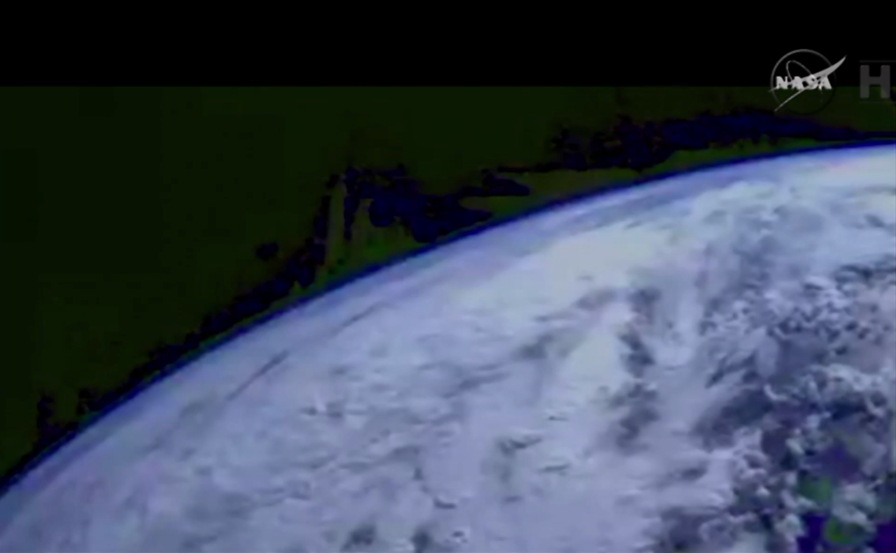NASA Launches First Orion Deep-Space Capsule in Historic Test Flight
CAPE CANAVERAL, Fla. — It's the test flight NASA has been waiting for. After a scrapped launch attempt Thursday (Dec. 4), NASA's new Orion capsule, designed to help deliver humans to deep space destinations like Mars someday, has just launched on its rigorous first test flight.

A United Launch Alliance Delta 4 Heavy rocket (the most powerful rocket currently flying from Earth) roared to life, launching the unmanned Orion space capsule from a pad here at Cape Canaveral Air Force Station at 7:05 a.m. EST (1205 GMT) today (Dec. 5). The prototype spacecraft is now embarking on a series of tests in orbit before its planned splashdown in the Pacific Ocean at about 11:30 a.m. EST (1630 GMT), 4.5 hours after leaving the planet. You can continue watching live coverage of the Orion test on Space.com, courtesy of NASA TV.
"We're actually excited about this particular step on our journey to the Red Planet, to Mars," NASA administrator Charles Bolden told members of the press Wednesday (Dec. 3), before launch. "It is a journey. I don't want people to get focused on the destination. This is a journey." [NASA's Orion Test Flight: Full Coverage]
This morning's launch was originally scheduled for 24 hours earlier, but several issues — including a boat downrange of Cape Canaveral, strong ground-level winds and the failure of several "fill and drain" valves on the Delta 4 Heavy to close all the way — pushed things back a day.
First space capsule in 40 years

Today's flight, called Exploration Flight Test-1 (EFT-1), marks the first time a spacecraft built for humans will travel out of low-Earth orbit in more than 40 years, and the excitement about the history-making flight is palpable at Kennedy Space Center, which is next door to Cape Canaveral.
About 27,000 spectators were expected to watch the launch Thursday from the NASA center's grounds, with thousands more expected to observe from the beaches and other viewing sites along Florida's Space Coast here, NASA officials said. Officials aren't yet sure how many viewers came back for the launch Friday.
"The launch itself was just a blast to see how well the rocket did," Mark Geyer, NASA's Orion program manager, said after launch. "It was exciting to see it as it went up into space. Being here at launch, being near a rocket that big, you just kind of feel it."
Sign up for the Live Science daily newsletter now
Get the world’s most fascinating discoveries delivered straight to your inbox.
Orion — built for NASA by Lockheed Martin, which is overseeing today's flight — looks somewhat like the capsules flown during NASA's Apollo moon landing program, which took humans to the moon for the first time. The feeling on the ground is also somewhat reminiscent of launches during the space agency's shuttle era, the last time humans flew to space from U.S. soil.
"In the sense that we are beginning a new mission, it is, I think, consistent with … the beginning of [the space] shuttle [program], the beginning of Apollo," Geyer said during a news conference before launch. "It's a new mission for us starting in the region of the moon and beyond. I think it's in that same category. Certainly the team is excited at that level. We're going to learn a lot on this flight."
A rigorous test flight

For this approximately $370 million test flight, mission controllers will check out Orion's key systems before the capsule carries astronauts in the future. If all goes according to plan, the capsule should orbit Earth twice, with its second orbit taking it about 3,600 miles (5,793 kilometers) away from the planet's surface — 14 times farther than the orbit of the International Space Station. [A Step-By-Step Guide to Orion's 1st Flight Test]
Mission controllers are particularly interested in seeing how the spacecraft behaves during important events such as separations once in space. Shortly after launch, Orion will jettison its launch abort system — built to propel future astronauts aboard Orion to safety in case of a problem during a launch. The capsule will also separate from its service module and the second stage of the rocket before re-entering Earth's atmosphere.
NASA officials will also be using the approximately 1,200 sensors aboard Orion to monitor the way the capsule's computers and other technology behave in the harsh space environment. Orion will fly through belts of radiation twice during the flight (once on the way out, and again on the way back to Earth), allowing scientists to see how the spacecraft's computers behave in a high-radiation environment.
The importance of a test

Officials also want to gather data that could help make flights to space in Orion safer for humans in the future. Some of its sensors will be devoted to monitoring conditions on the inside of the uncrewed spacecraft. In total, 55 percent of the systems needed for a crewed spaceflight are being tested during this flight, NASA officials said.
"It's important it's unmanned because we actually structured the test to fly the riskiest pieces of the flight," Geyer said. "This is the time to do it, when it's unmanned. We intend to stress the systems and make sure they behave as we designed them to … It is a test flight, and it's set up to be a risky flight."
Orion's journey doesn't stop in space.
The capsule will also be put the test when coming back to Earth. Orion's giant heat shield, the largest of its kind ever made, will need to withstand temperatures of up to 4,000 degrees Fahrenheit (2,200 degrees Celsius) when the craft slams into Earth's atmosphere at a speed of about 20,000 mph (32,000 km/h).
Orion's parachute system will also be put to the test after the capsule re-enters Earth's atmosphere.
The U.S. Navy will fish Orion out of the Pacific Ocean after splashdown in order to retrieve precious flight data recorded during the test. Eventually, NASA hopes to re-fly this Orion prototype during a test of its launch abort system.
Human spaceflight's future
This is the first flight for Orion, but it shouldn't be the last. NASA is planning on launching another uncrewed mission with the capsule sometime in 2017 or 2018. That mission, dubbed Exploration Mission-1, will be the first flight of Orion with NASA's new mega rocket, the Space Launch System (SLS), currently in development.
After that, Orion and SLS are expected to fly together again in 2021 for their first crewed mission. NASA wants that flight to potentially take astronauts out to visit an asteroid towed into orbit around the moon, allowing them to test out some of the technologies needed for a trip to Mars.
The Orion capsule cannot fly astronauts to Mars on its own. The spacecraft will need to be outfitted with a functional service module and a habitat module in order to make a trip to the Red Planet comfortable for the four astronauts on the journey, officials have said.
Editor's Note: This story was updated at 7:52 a.m. EST (1252 GMT) with new details and quotes after launch.
Follow Miriam Kramer @mirikramer. Follow us @Spacedotcom, Facebook and Google+. Original article on Space.com.











